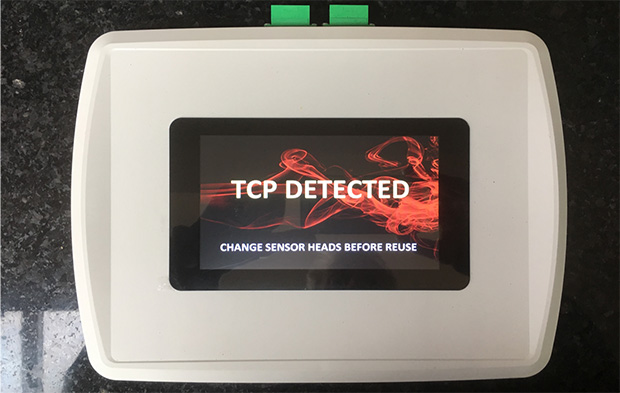Cabin Air Sensor Solutions has developed the world’s first portable, nano-optical sensor, able to detect individual poisonous compounds in aircraft cabins in real time, particularly those associated with aircraft “Fume Events”. The technology, invented by Professor Jeremy Ramsden, CASS Chief Technical Officer, has stolen a lead on every other sensor in the world with its unique capability to detect individual compounds and gases, even when multiple compounds and gases are present. It has been verified by the UK’s premier institute for the verification and certification of sensors and measuring devices and technologies, the National Physical Laboratory.
Highlights:
The most recent developments have seen the library of compounds and gases able to be detected by the sensor increase to include Tributyl Phosphate, TriCresyl Phosphate, Carbon Monoxide, Limonene, Toluene and several others. Further software improvements now ensure the sensor can detect complex mixtures of poisonous compounds individually and without confusion or errors. This is key to the next phase of development where the sensor will be taken onto aircraft for further testing, verification and evaluation by interested airlines and manufacturers.

Recommended: AnnounceKit Helps Companies Communicate Product Updates, Increase Feature Adoption And Build Customer Trust
Insights:
In developing close relationships with the industry, current commercialisation discussions in the first instance are focused on aircraft fume-event diagnosis. This is where certain aircraft across many airlines are suffering from multiple “Fume Events” and the airlines are keen to understand the causes and conditions under which they occur. The CASS “Canary” sensor capabilities will assist the maintenance crews diagnose the route-causes of these problems, through determination of the actual compounds and/or gases released into the aircraft cabin and their potential sources, enhancing safety, avoiding costs and improving aircraft availability.
The sensor is intended be used in the aircraft cockpit, and galley areas as an early warning device for any air quality issues that could affect aircrew and passenger safety, and differentiate between poisonous compounds where immediate action is required, and non-poisonous compounds where less serious responses are necessary.
Going Forward:
The next phase of technology development is the build of multiple pre-production prototypes for testing in aircraft, and verification of their increased capabilities to detect all poisonous compounds of interest, and others besides.
Unique’s:
The most interesting aspect of the technology is the potential to detect almost any compound or gas that is present in the air. The combination of Opto-Electronics, i.e. a combination of optical and software-driven electronics, is sufficiently flexible to detect extremely low levels of contaminants and gases, subject to testing and verification in the case of each new target compound or gas.

Written by:
David Newman, the Director at Cabin Air Sensor Solutions Ltd






